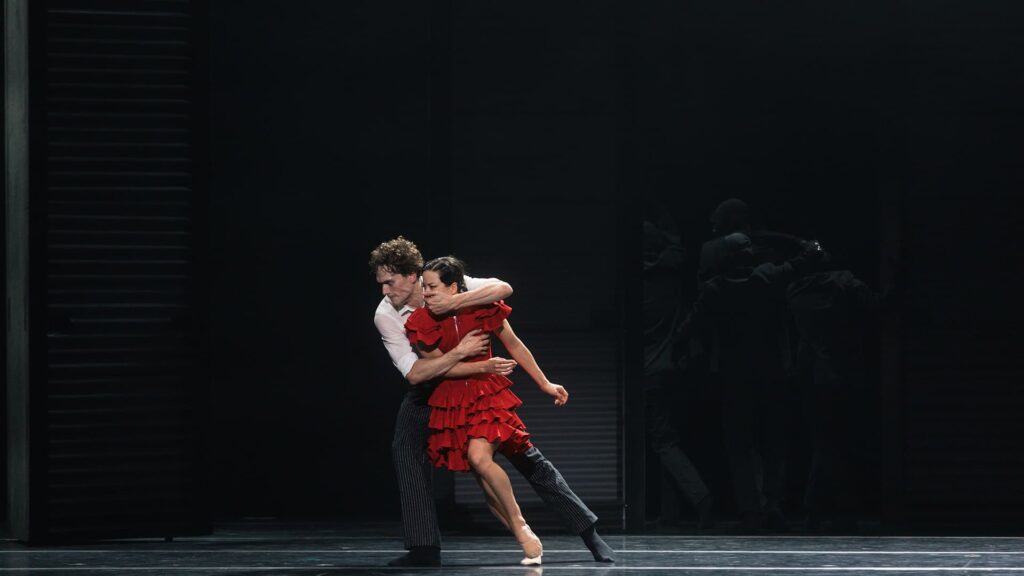The Australian Ballet | Review by Edith Baggoley
The Cost of Sexuality: Johan Inger’s Carmen

16 July 2025
Johan Inger’s Carmen, recently touring to the Canberra Theatre Centre, is a masterclass in reinventing classic works to relate to modern problems. The world-famous story (featuring famous pieces like Habanera and the Toreador Song) follows Don Josè, a soldier, who quickly becomes obsessed with Carmen, a seductive and flirtatious young woman who is willing to utilise her beauty to escape difficult scenarios, while having fun along the way. Whilst typically Don Josè is portrayed as a desperate lover whose youth and inexperience leads to his downfall, Inger’s version of the story is much darker and more real. Don Josè’s behaviour is terrifying and irrational, but eerily reminiscent of many men known to a modern audience.
Johan Inger’s choreography is a feast for the eyes and a masterclass in storytelling through dance. The plot was clear and well told through movement, opening a door to the deeper meaning of this interpretation. Particularly notable was the Act II opener which follows Don Josè’s run from the law, and was also a brilliant showcase of the versatile set design (Curt Allen Wilmer, Leticia Gañán, Estudio DeDos). The set, made up of six periactoids, was effectively bleak and despairing — the use of mirrors and chains (seen in Act II) was particularly clever, with the dancers quite literally holding up a mirror to society.
The cast, accompanied beautifully by the Canberra Symphony Orchestra, was composed of not only brilliant dancers, but equally strong actors. Lilia Harvey’s curious portrayal of the Boy (a new character specifically made for Inger’s portrayal), created an easy-to-follow emotional journey for the character, who represents innocence. Jill Ogai shone in the title role of Carmen, whose characterisation was unique but deliciously complex. As the storyline progressed, I found myself sympathising deeply for Carmen — a clear victim of the patriarchy and the sexualisation she has faced from so many men. The standout performer was Callum Linnane as Don Josè, whose dancing and acting was a testament to Inger’s inspired retelling. He delivered a vulnerable performance, displaying an outstanding sense of musicality and understanding of this character. Throughout the performance, Linnane only ever uttered the words “Carmen”, but with each movement, it felt as though he was speaking directly from Don Josè’s soul. Don Josè is reminiscent of many experiences faced by women in modern society — the transactional male. Linnane’s performance was neither extreme, nor oversimplified, and the realism was at times jarring in the best way.
Although at face value, this ballet is visually and musically stunning, the gravity of the story it tells is not to be ignored. In today’s climate we too often hear about acts of femicide, but this reality is rarely brought to as many varying demographics as the one Carmen garnered on its opening night in Canberra. Carmen was not just a tale about the “dangers of falling for an impossible woman”, it was a commentary on the behaviours of both men and women under the patriarchy. This concept of “the male gaze” is challenged and provoked, and audiences are confronted with the price of sexuality in a modern society. It became shockingly apparent that Don Josè is not meant to be a fictional character, he is a real person that most women have encountered.

Edith Baggoley is a current high school student studying drama and musical theatre in year 10. She has performed in youth, community and school theatre for over a decade. Edith has previously worked with Canberra Youth Theatre in The Trials as Addie, and is a part of the 2025 Young Critics.
